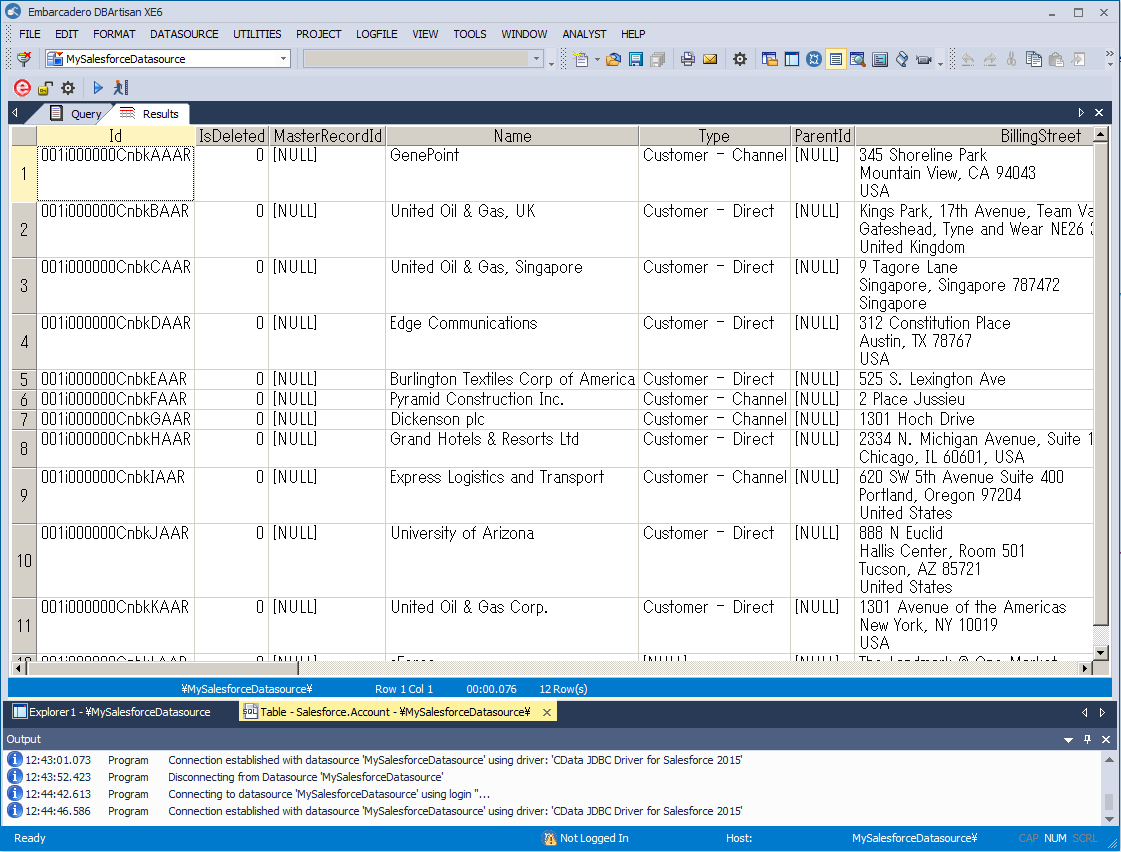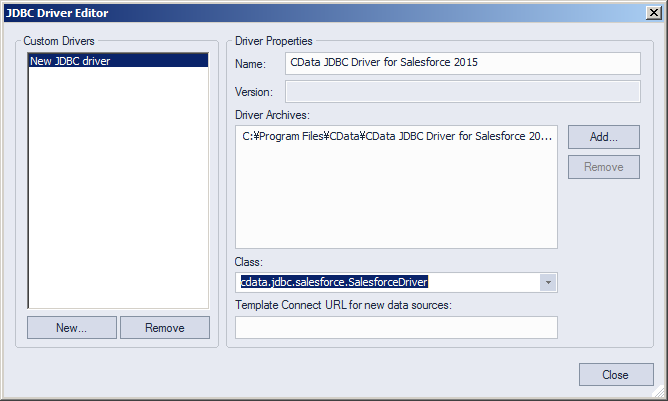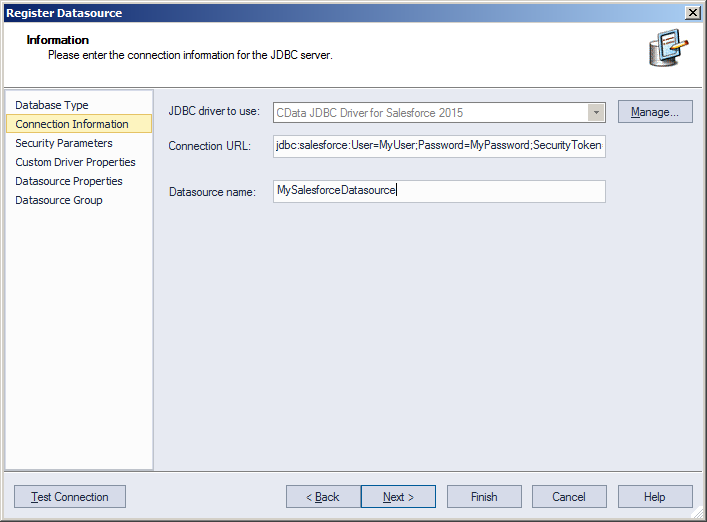Discover how a bimodal integration strategy can address the major data management challenges facing your organization today.
Get the Report →Manage xBase Data in DBArtisan as a JDBC Source
Use wizards in DBArtisan to create a JDBC data source for xBase.
The CData JDBC Driver for xBase seamlessly integrates xBase data into database management tools like DBArtisan by enabling you to access xBase data as a database. This article shows how to create a JDBC source for xBase in DBArtisan. You can then edit data visually and execute standard SQL.
Integrate xBase Data into DBArtisan Projects
Follow the steps below to register xBase data as a database instance in your project:
- In DBArtisan, click Data Source -> Register Datasource.
- Select Generic JDBC.
- Click Manage.
- In the resulting dialog, click New. Enter a name for the driver and click Add. In the resulting dialog, navigate to the driver JAR. The driver JAR is located in the lib subfolder of the installation directory.
![The JDBC driver definition in the Register Datasource wizard. (Salesforce is shown.)]()
-
In the Connection URL box, enter credentials and other required connection properties in the JDBC URL.
The DataSource property must be set to the name of the folder that contains the .dbf files. Specify the IncludeFiles property to work with xBase table files having extensions that differ from .dbf. Specify multiple extensions in a comma-separated list.
Built-in Connection String Designer
For assistance in constructing the JDBC URL, use the connection string designer built into the xBase JDBC Driver. Either double-click the JAR file or execute the jar file from the command-line.
java -jar cdata.jdbc.xbase.jarFill in the connection properties and copy the connection string to the clipboard.
![Required JDBC connection properties in the Register Datasource wizard. (Salesforce is shown.)]()
Below is a typical connection string:
jdbc:xbase:DataSource=MyDBFFilesFolder; - Finish the wizard to connect to xBase data. xBase entities are displayed in the Datasource Explorer.
You can now work with xBase data as you work with any other database. See the driver help documentation for more information on the queries supported by the xBase API.









